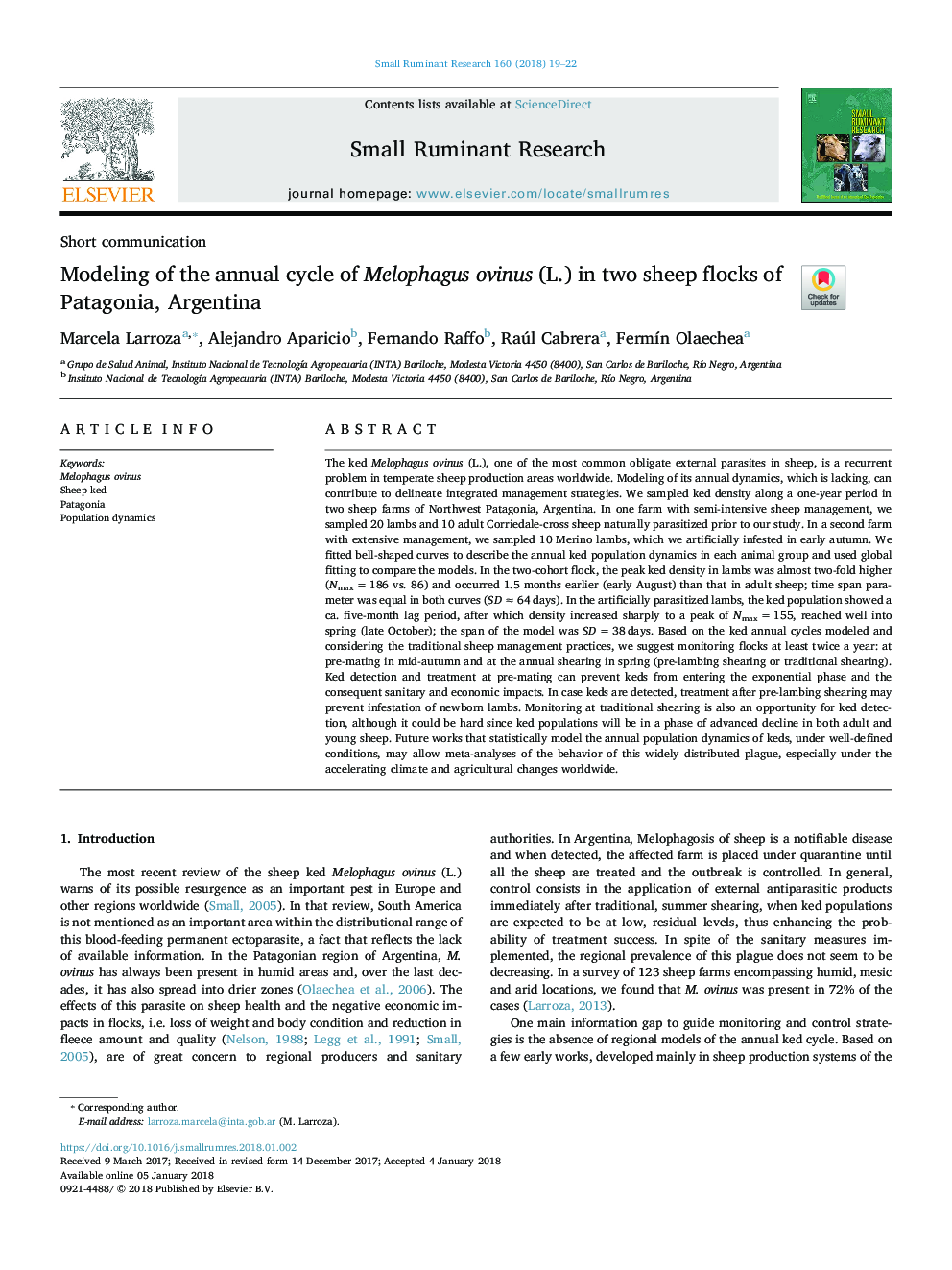| Article ID | Journal | Published Year | Pages | File Type |
|---|---|---|---|---|
| 8504275 | Small Ruminant Research | 2018 | 4 Pages |
Abstract
The ked Melophagus ovinus (L.), one of the most common obligate external parasites in sheep, is a recurrent problem in temperate sheep production areas worldwide. Modeling of its annual dynamics, which is lacking, can contribute to delineate integrated management strategies. We sampled ked density along a one-year period in two sheep farms of Northwest Patagonia, Argentina. In one farm with semi-intensive sheep management, we sampled 20 lambs and 10 adult Corriedale-cross sheep naturally parasitized prior to our study. In a second farm with extensive management, we sampled 10 Merino lambs, which we artificially infested in early autumn. We fitted bell-shaped curves to describe the annual ked population dynamics in each animal group and used global fitting to compare the models. In the two-cohort flock, the peak ked density in lambs was almost two-fold higher (Nmaxâ¯=â¯186 vs. 86) and occurred 1.5 months earlier (early August) than that in adult sheep; time span parameter was equal in both curves (SDâ¯ââ¯64â¯days). In the artificially parasitized lambs, the ked population showed a ca. five-month lag period, after which density increased sharply to a peak of Nmaxâ¯=â¯155, reached well into spring (late October); the span of the model was SDâ¯=â¯38â¯days. Based on the ked annual cycles modeled and considering the traditional sheep management practices, we suggest monitoring flocks at least twice a year: at pre-mating in mid-autumn and at the annual shearing in spring (pre-lambing shearing or traditional shearing). Ked detection and treatment at pre-mating can prevent keds from entering the exponential phase and the consequent sanitary and economic impacts. In case keds are detected, treatment after pre-lambing shearing may prevent infestation of newborn lambs. Monitoring at traditional shearing is also an opportunity for ked detection, although it could be hard since ked populations will be in a phase of advanced decline in both adult and young sheep. Future works that statistically model the annual population dynamics of keds, under well-defined conditions, may allow meta-analyses of the behavior of this widely distributed plague, especially under the accelerating climate and agricultural changes worldwide.
Keywords
Related Topics
Life Sciences
Agricultural and Biological Sciences
Animal Science and Zoology
Authors
Marcela Larroza, Alejandro Aparicio, Fernando Raffo, Raúl Cabrera, FermÃn Olaechea,
